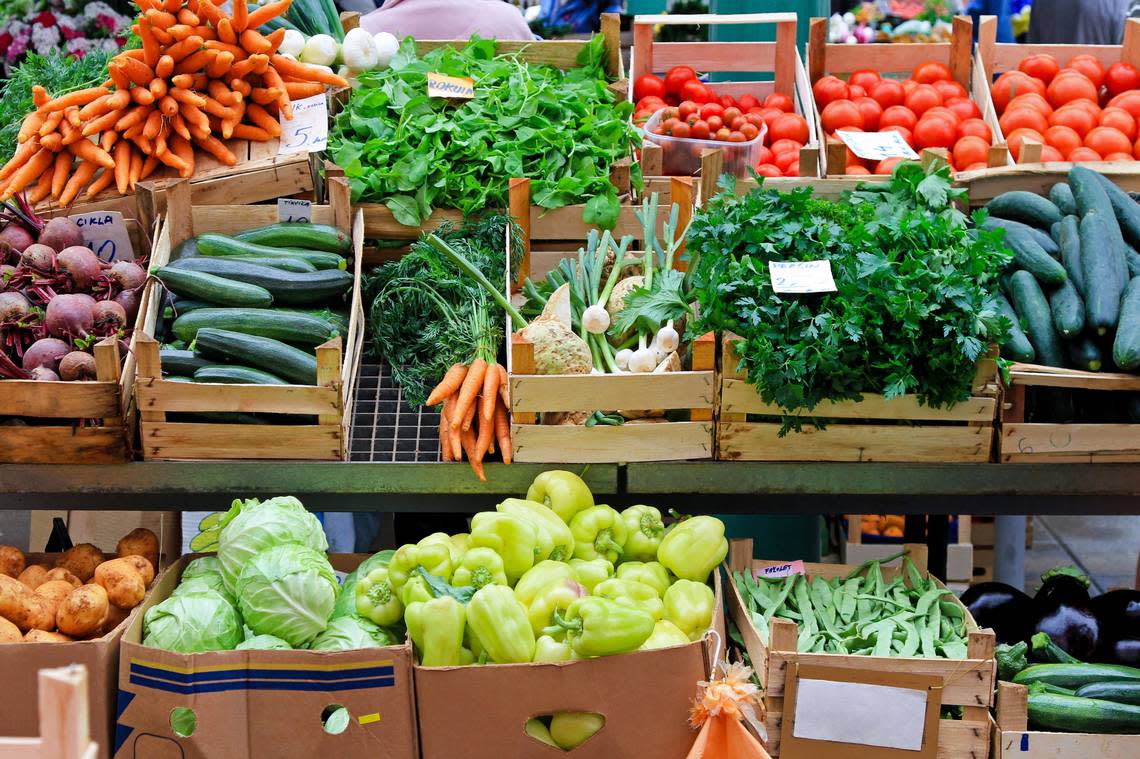Eggs cost HOW much now? These graphs show food prices increasing, what to expect in 2023

Throughout 2022, United States residents saw their grocery prices rise at historical rates. Americans are now paying about 9.9% more for food than a year ago. Food-at-home prices — what you buy from the grocery store — rose by 11.4%, and food-away-from-home prices increased by 7.7%.
Looking ahead, there is good news and bad news for 2023.
The good news: Food prices are expected to grow more slowly in 2023 than in 2022, according to the U.S. Department of Agriculture.
The bad news: Food prices are still expected to rise above historical average rates in 2023. The Department of Agriculture expects food prices to increase by 7.9% by the end of the year.
Idahoans who shop at Albertsons could see price increases soon following the company’s $24.6 billion merger with Kroger. Albertsons went through a lengthy battle with Washington state Attorney General Bob Ferguson over the payment of a $4 billion dividend to shareholders; Ferguson feared the dividend payment would result in an increase in price and a shortage of stock at Albertsons until the merger was complete.
While it’s challenging to forecast which foods will increase over the coming year, it is possible to look at trends and how they may continue throughout 2023. Price monitoring website Pricelisto conducted a study using the Consumer Price Index to determine which food-at-home prices are seeing the most significant price increase.
“The rise in prices will burden those who have to provide for most of their families, as well as pay other household bills,” a spokesperson for Pricelisto stated in a news release.
“Consumers must be more conscious of where and when they spend their money,” the spokesperson continued. “To keep costs low, families will need to shop at low-cost grocery chains; however, this could mean compromising on preferred brands.”
Here’s what the study found:
Meat, poultry and seafood
Poultry items such as chicken and turkey saw a nearly 15% increase in 2022, the largest rise in this category. The rising costs are primarily due to high consumer demand, according to Pricelisto.
The below graph shows the increase in chicken prices in major U.S. cities from the start of 2022 to now. The price for a pound of chicken at the beginning of the year was $1.62, which raised to $1.86 per pound by the end of the year.
Beef and veal saw the lowest increase in 2022 at 5.3%, followed by pork (8.7%) and fish (9.1%).
Pantry and dairy items
Eggs were one of the hardest-hit common food items of 2022, primarily due to the Highly Pathogenic Avian Influenza (HPAI) outbreak. The outbreak killed around 50 million birds in the U.S., some in Idaho, and resulted in an egg shortage, raising prices by approximately 32.2% nationally.
In major U.S. cities, the cost of a dozen eggs rose from $1.93 to $4.82 per dozen — a 149.7% increase, much higher than the national average and putting a strain on wallets.
Cooking oils and fats, such as butter, saw a 19% increase, while other dairy products rose by about 12%. Cereals and other bakery goods rose by about 13%, according to Pricelisto, because of the ingredients required to make them.
Sugar, candy and non-alcoholic beverages
Sugar and candy saw a similar issue to cereal and baked goods in that the ingredients required to manufacture them increased in price — as a whole, candy products increased by 10.4%.
A pound of white sugar increased from 71 cents to 86 cents over the year.
Non-alcoholic beverages, such as soda, saw a similar price increase of 11% because of the sugar involved in processing it.
Fruits and vegetables
Fruits and vegetables were the least affected food groups in 2022 but still saw annual increases of 7.9% and 7%, respectively. The rise is mainly due to storms and droughts decimating crops, according to Pricelisto.
Parts of the Midwest are in exceptional drought — the most severe level — while most of the west is under some drought conditions, according to the National Oceanic and Atmospheric Administration. Past drought in Idaho — nearly the whole state is currently in some level of drought — has resulted in the state being water-strapped, according to previous Idaho Statesman reporting.
The following graph shows the prices over time of some popular fruits and vegetables.











